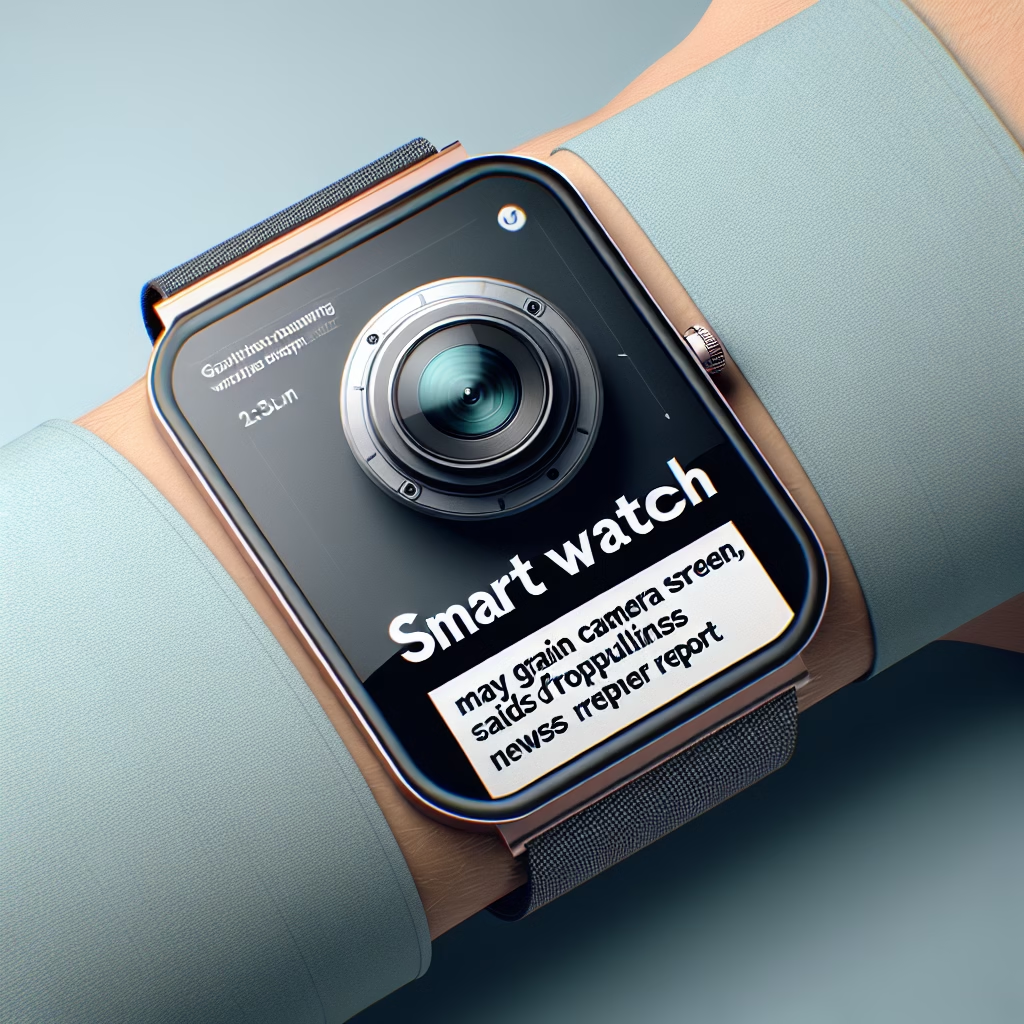Apple Watch May Get a Camera and Sensors Under Its Screen
Apple has been continuously innovating the Apple Watch lineup, transforming it from a simple smartwatch to an advanced piece of wearable technology. A new report suggests that Apple is working on an ambitious new feature for future Apple Watch models: integrating a camera and sensors directly under the display.
According to Bloomberg, Apple is researching ways to embed these components beneath the screen without compromising functionality or design. This development could significantly enhance the smartwatch experience for users. Let’s dive into what this could mean for Apple Watch users, the possible challenges, and when we might see these features in action.
Why Is Apple Adding a Camera to the Apple Watch?
Smartwatches have largely been limited when it comes to capturing photos or enabling video calls. While some third-party bands feature built-in cameras, Apple has yet to integrate one directly into the Apple Watch. This upcoming technology could change that by allowing users to take quick photos, engage in FaceTime calls, and even leverage facial recognition for security.
Potential Use Cases for an Apple Watch Camera
- FaceTime Calls: A camera built into the Apple Watch could enable video calls, allowing for more seamless communication without needing to pull out an iPhone.
- Quick Photos: Capture small, on-the-go moments at a wrist-level perspective without having to reach for a phone.
- Face ID or Security Enhancements: Apple may use the camera for facial recognition, potentially aiding in device security.
- Augmented Reality (AR): As Apple enters the AR and VR space, an Apple Watch camera could be used for interactive applications.
The addition of a camera could significantly elevate the Apple Watch’s functionality, but putting one inside such a small device comes with challenges.
The Challenges of Adding a Camera Under the Apple Watch Display
While embedding a camera and additional sensors under the screen sounds impressive, it presents several engineering hurdles. Here are the primary challenges Apple will need to overcome:
1. Display Quality and Transparency
Placing a camera beneath the display means the screen will need to become partially transparent in specific locations. Apple must ensure that this doesn’t degrade the quality of the watch’s display, which could impact readability and user experience.
2. Image Quality and Light Transmission
Photographs and video calls require clear image quality, and putting a camera behind the display could result in loss of light transmission. Apple would have to use advanced computational photography or specialized coatings to enhance image capture.
3. Battery Life Concerns
Adding a camera will inevitably require additional power, which could put extra strain on battery life. Apple has always prioritized maintaining battery efficiency in its devices, so it will need to balance new features with power management.
4. Privacy and Security Implications
With a camera embedded directly in an Apple Watch, privacy will be a significant discussion point. Apple would need to emphasize secure usage and potentially include features where users have absolute control over when the camera is active.
What About Under-Display Sensors?
The rumored updates aren’t just limited to a camera. Bloomberg’s report states that Apple is working on housing additional sensors beneath the display as well. These sensors could enhance the Watch’s health tracking and interaction methods.
- Improved Heart Rate Monitoring: Apple could refine heart rate and ECG data collection by using under-display biometric sensors.
- Blood Glucose and Other Health Features: Apple has long been researching non-invasive blood glucose monitoring. This could materialize through invisible sensors under the screen.
- Gesture Controls: Apple may develop new gesture-based interactions to improve navigation within watchOS.
These health-focused advancements would align with Apple’s continued mission to make the Apple Watch a powerful health and fitness tool.
When Will These Changes Arrive?
While the idea of under-display cameras and sensors sounds incredible, Bloomberg’s report suggests that these features are still in the early research and development phase. That means we likely won’t see them in the upcoming Apple Watch Series 10 or even Series 11.
What Experts Predict
- Some analysts suggest we could see initial implementations of under-display features within the next 3-5 years.
- Others speculate that Apple may introduce incremental updates first, such as a camera in an external band, before fully embedding it under the screen.
Apple is known for taking its time with complex new technology, ensuring perfection before officially releasing it. If these features require entirely new display technology or processing power, we may have to wait until the late 2020s before they become mainstream.
Final Thoughts: A Game-Changer for Wearables?
The possibility of an under-display camera and sensors in future Apple Watch models is an exciting prospect. If Apple manages to tackle the technical challenges, this could revolutionize the smartwatch industry. A camera on the wrist could open new doors for communication, security, and health tracking while redefining how we interact with wearable devices.
While there’s no definitive launch timeline yet, it’s evident that Apple is pushing the boundaries of technological innovation. Whether these advancements arrive in a few years or a decade, one thing is certain—Apple continues to set new standards in the world of wearables.
What are your thoughts on an Apple Watch with a built-in camera? Would you use it for FaceTime or quick snapshots? Let us know in the comments below!
< lang="en">







Leave a Reply